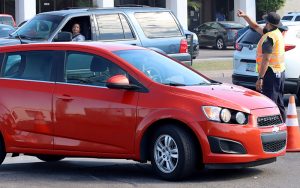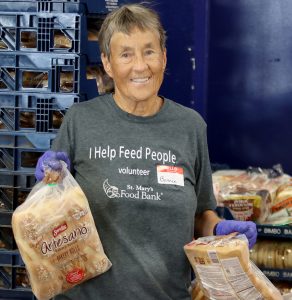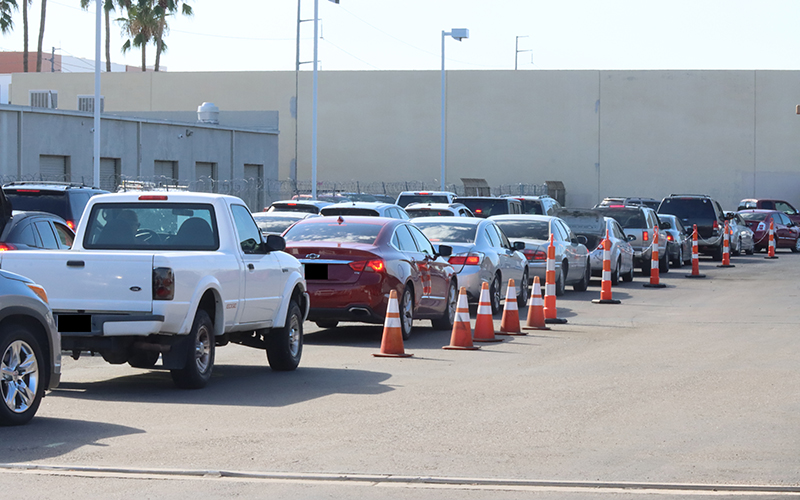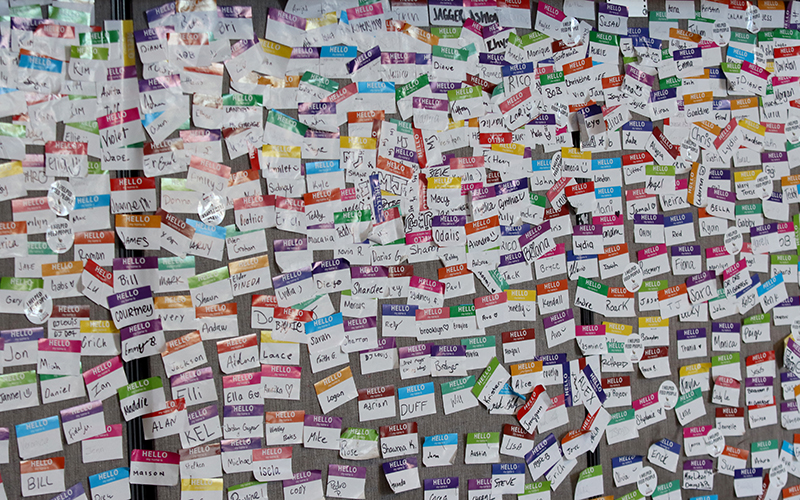PHOENIX – As the line of cars awaiting groceries wrapped around the building, parking lot attendants used orange cones to close the entrance to the food bank and keep the line from snarling traffic on busy Thomas Road. That sent recent arrivals circling the block until the lot reopened.
This is the new normal for St. Mary’s Food Bank in central Phoenix as the number of people in need has risen sharply along with inflation.
“Right now, we’re seeing over 900 families a day come to this one location, and we have hundreds (of distribution locations) across the Valley,” said Jerry Brown, director of media relations for St. Mary’s Food Bank. “The number of people who are coming to the food bank is overwhelming, and it’s a number that we have not seen in our history.”
At the two main food banks in Phoenix and Surprise, St. Mary’s saw a daily average of 1,239 families in the first 12 days of September, the latest data available.
Brown said the influx is a direct effect of inflation, which has hit Phoenix particularly hard. In the Phoenix metro, food prices have increased 14.1% over the past year, with food-at-home prices rising by 15.7%, according to the U.S. Bureau of Labor Statistics.

A lot attendant at St. Mary’s Food Bank in central Phoenix tells a carload of people they must circle the block until the lot reopens on Sept. 26, 2022. Nearby streets are filled with cars driving around, awaiting their turn. (Photo by Justin Spangenthal/Cronkite News)
“Once the pandemic subsided last year, so did the number of people who came,” Brown said. “We’ve been around for 55 years, and we have never served 150,000 families a month – until last month (August).”
In the first two weeks of September, St. Mary’s already was trending 6% higher than in August.
People are allowed to come once a month for emergency food boxes that include such staples as vegetables, canned fruits, pasta, peanut butter, tomato sauces, beans and rice. St. Mary’s has had to cut down on the number of items per box to ensure all items are available.
Although the emergency boxes are not meant to provide meals for an entire month, families can come as needed to receive items donated by grocery stores, such as meat, cheese, eggs, ice cream and soft drinks.
Raymond Gonzalez, 56, said he’s been coming to St. Mary’s occasionally for about three years, but only when he finds himself in need.
“I work, and with rent and my medical bills, this really helps me when I come a few times a year,” he said.

Raymond Gonzalez, 56, says he only comes to St. Mary’s Food Bank in central Phoenix when in dire need. Photo taken Sept. 26, 2022. (Photo by Justin Spangenthal/Cronkite News)
To accommodate the crush of families in need, St. Mary’s has expanded its Monday through Friday hours. During the pandemic, it began using delivery services, such as DoorDash, to provide food to those without transportation. The services now are being used for the elderly and people with disabilities.
Now that federal pandemic assistance has subsided, the food bank relies solely on donations of food from individuals and grocery stores, and on monetary donations from the public. It’s in desperate need of both right now.
“St. Mary’s is buying a lot more food than they had this time last year, and that food is more expensive than it’s ever been,” Brown said.
St. Mary’s has yet to turn anyone away, he said, in part because the staff predicts what’s to come in upcoming weeks and months to make sure there’s enough for everyone.
Bonnie Harvey, who has volunteered at St. Mary’s Food Bank since 1997,blames the economy for the increasing number of people in need, but she’s grateful to see people willing to lend a hand.
“It’s hard on people right now,” Harvey said. “But a lot of people have stepped up to volunteer since the pandemic, especially because they know the problems people are facing.”
Volunteers have begun to return after a steep dropoff during the pandemic, but St. Mary’s still struggles to keep up with the traffic.
Many volunteers are being asked to stay past the end of their shifts to fill vacant positions.

Bonnie Harvey, who has volunteered at St. Mary’s Food Bank since 1997, loads baked goods into each cart that comes to her station. Despite the grind, she says, she always tries to keep smiling. Photo taken Sept. 26, 2022. (Photo by Justin Spangenthal/Cronkite News)
In addition to volunteers, the food bank desperately needs food and monetary donations. Every dollar donated provides seven meals, which breaks down to about 14 cents a pound, Brown said.
He said the No. 1 priority of the food bank is to be able to provide every person a meal.
“One thing that’s really important to us is that we feed people so they don’t get sick,” he said. “If you don’t have money to feed yourself, you don’t have money to go to the doctor, either. We want to feed people in a healthy way and to help them get through what’s a very difficult time for a lot of people.”
Although he hopes to see an economic shift, Brown said St. Mary’s Food Bank is bracing for continued hard times ahead.
“I think things have to turn around in the economy before they turn around here,” he said. “It’s been a very difficult summer, and it’s rolling into what looks to be a very difficult fall because the numbers have not abated in any way, they’ve only gone up.”






